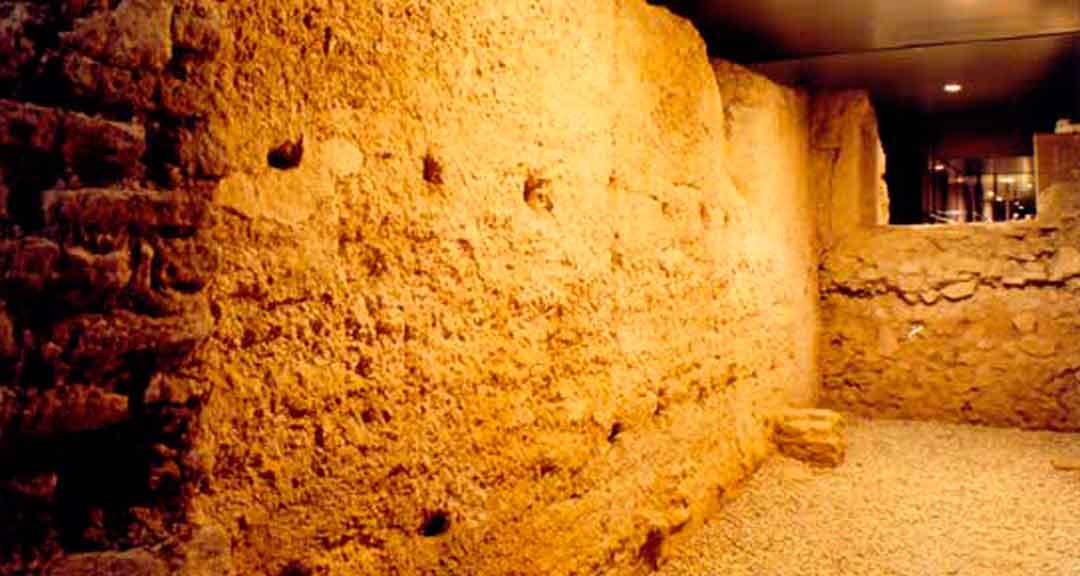
Interior of the Orihuela City Wall Museum
The City Wall Museum is located in the basement of the “Casa del Paso” building, on the Las Salesas Campus of the Miguel Hernández University.
It houses an important archaeological site, the result of excavations made in various phases between 1998 and 2000.
It preserves a significant archaeological heritage: the city wall and four turrets, Arabic baths, an Islamic and Medieval street and houses, a gothic palace and architectural ruins of the Casa del Paso (an 18th century building). Furthermore, the remains of materials dating to the second half of the 12th century and first half of the 13th century up to the 20th century have been recovered.
Monographic on archaeological excavations on the “Casa del Paso” site carried out between 1998 and 2000. The discoveries have been spectacular and of great architectural and historic importance, notably:
- City Wall (declared CIG 14-12-1998). Dated to the Almohad period (mid-12th to mid-13th century) with later renovations. Set out along the basement from one end to the other in a longitudinal direction.
- Attached to the wall are three turrets with quadrangular bases and a buttress.
- Arabic baths, from the Almohad period (mid-12th to mid-13th century), its use lasted until the Christian period (14th to 15th century). They are located outside of the city wall, taking up an area of nearly 200m2. The service area is preserved with the furnace and the three rooms: cold, warm and hot.
- Islamic houses from the Almohad period (mid-12th to mid-13th century) and medieval period. Located in a street running parallel to the city wall and built around patios which take up a central position.
- Gothic palace. This is a preserved civil gothic building in the city, the palace of Prince Fernando de Aragón, Lord of Orihuela in the second half of the 14th century.
- Architectural remains of the “Casa del Paso”, former 18th century stately home, of which various architectural structures are preserved.
The museum is visited through a perimeter passage and glass walkways, and also has a series of complementary resources for the interpretation of the archaeological finds such as panels, models, stands and display cases. Various archaeological materials are preserved in display cases, dating from the middle of the 12th century to the start of the 20th century. The vast majority of them correspond to different series of ceramics, although there are also metallic, numismatic and glass items.


